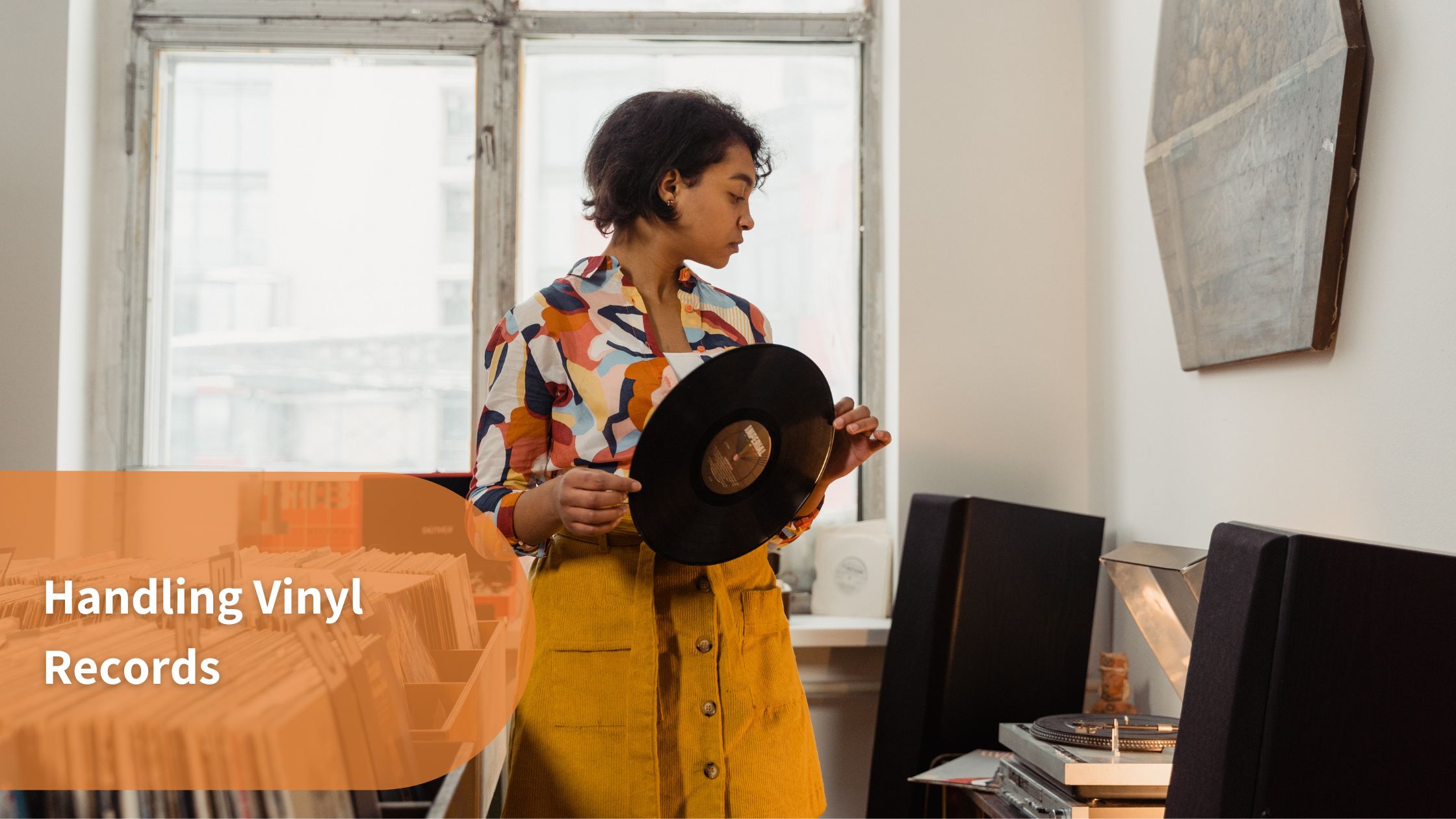Ensuring your vinyl records last as long as possible requires consistent proper handling and care. Many things can affect the quality of a vinyl record, and if you cut corners, it’s possible to encounter adverse effects on the sound quality.
Keeping your vinyl record collection in good condition comes with a few steps that any vinyl enthusiast should know about. For this article, I will dive into how to handle vinyl records and treat them with the care they require.
Key points
- Before removing a record from its sleeve, ensure your hands are clean.
- Remove the record from its inner sleeve by holding it at the outer edge and placing your fingers on the center label.
- When handling a record outside of its sleeve, only touch the center label and the very edge of the vinyl. Avoid contact with playing surfaces or grooves.
- To return a vinyl to its sleeve, pick it up by the outer edges using your middle and ring finger; then grab by label and thumb for better grip before inserting back into the inner sleeve.
A step-by-step guide to properly handling records
Step 1: Clean your hands
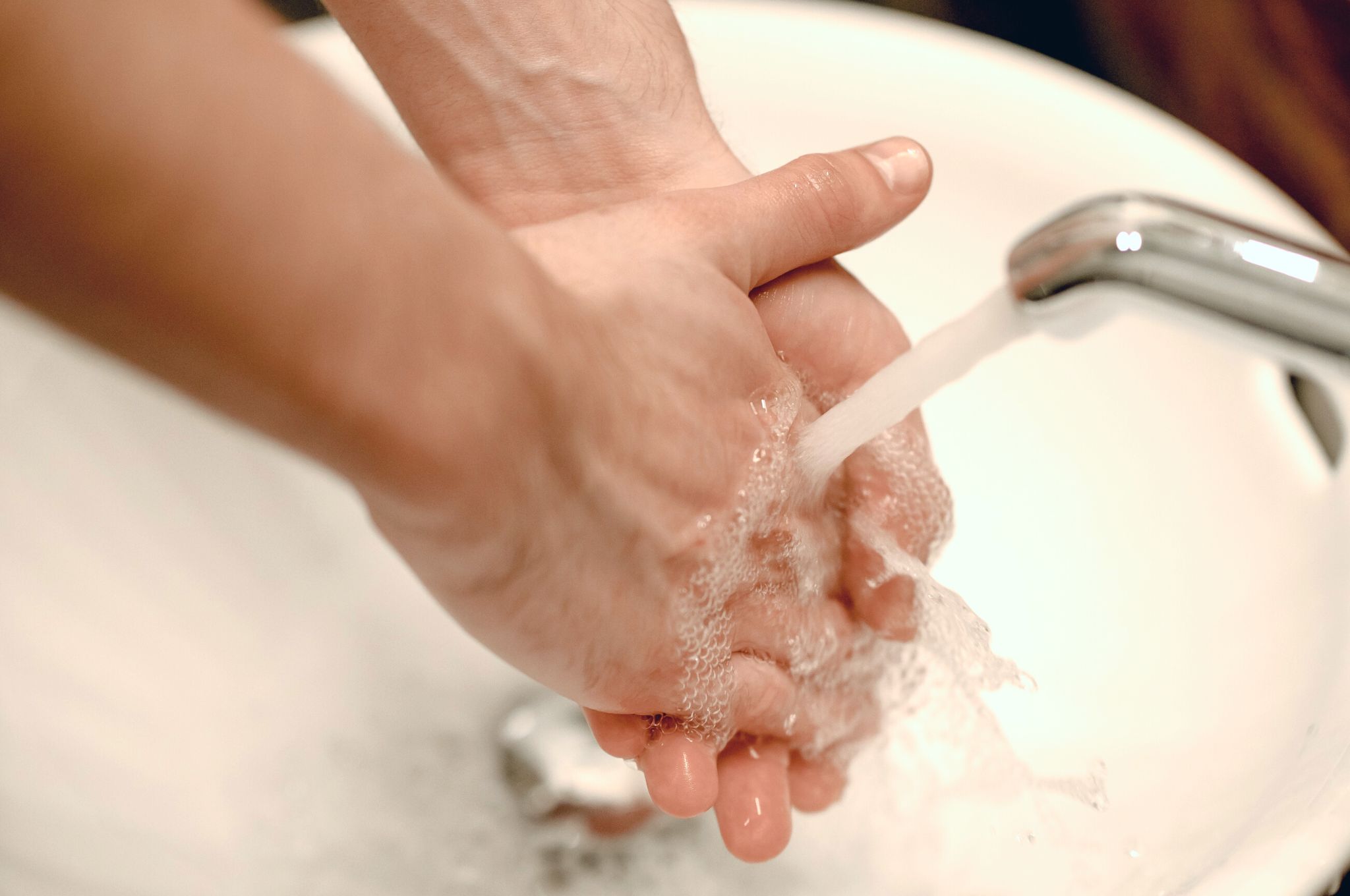
Before you even consider removing a vinyl record from its inner sleeves, you want to ensure your hands, especially your fingertips, are clean. Vinyl records are known to be a magnet for tiny dust and debris particles, and your hands generally have a lot of that on them.
Thoroughly washing and drying your hands before you handle vinyl records will guarantee they remain clean every step of the way. It doesn’t take much to dirty up the surface of a vinyl record, so this is a baseline step that should always be followed.
Step 2: Remove the outer sleeve
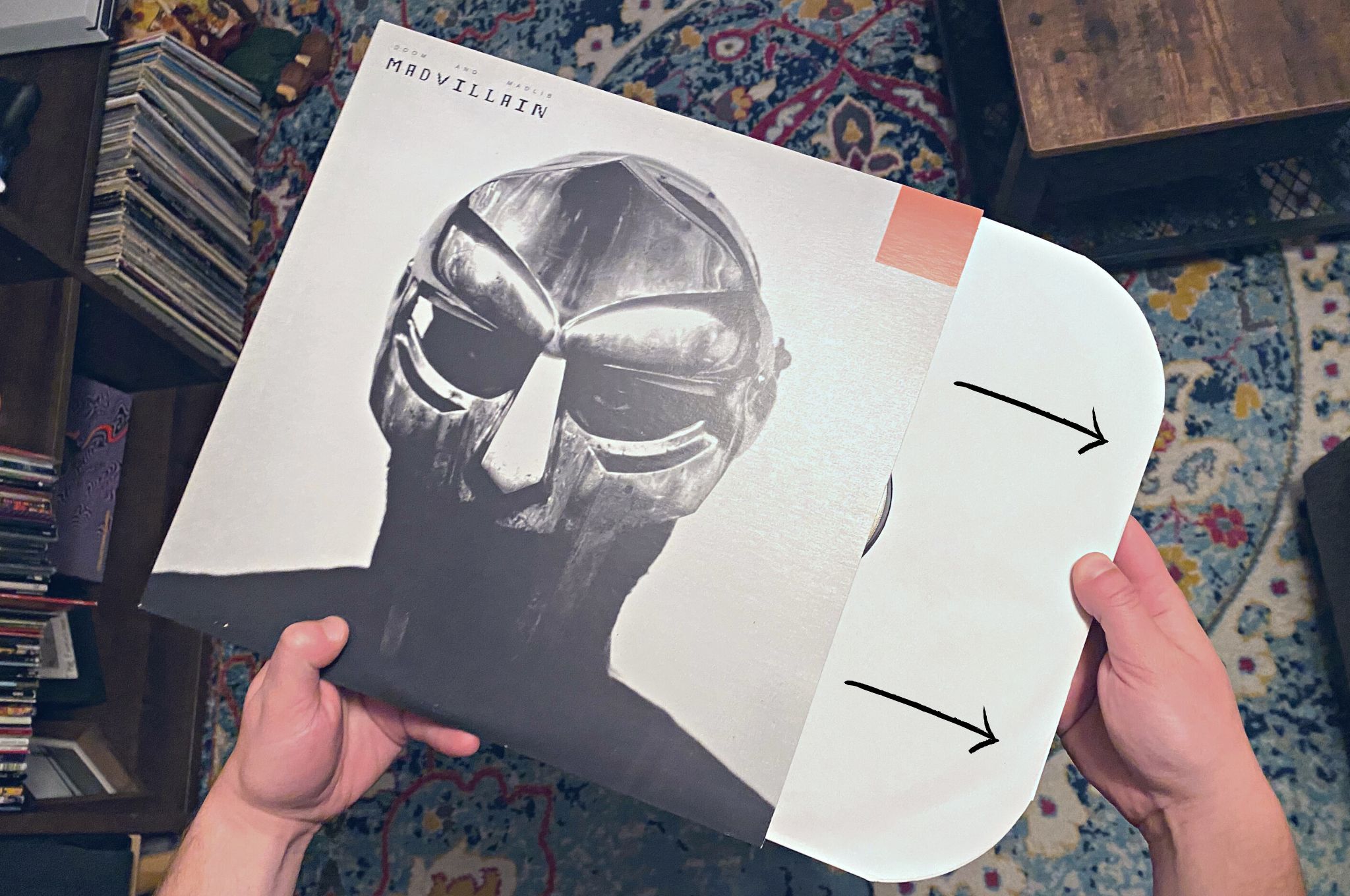
Next, you’ll remove the inner sleeve from the record’s outer jacket. This protective covering is essential to ensure your vinyl records stay free of scratches, dust, and debris. You’ll want to use as little force as possible for the next step.
Place your thumb on the outer edge, take your middle and ring fingers, and place them on the record’s center label to avoid the grooves.
Slowly remove the record from the inner sleeve, and make sure you avoid touching the record’s surface throughout this process. Considering its thin and round shape, it can take time to discern the best way to handle a vinyl record. Above all, you want to avoid touching the playing surface of vinyl records as their grooves and readability can be easily compromised.
Step 3: Remove the record from the inner sleeve
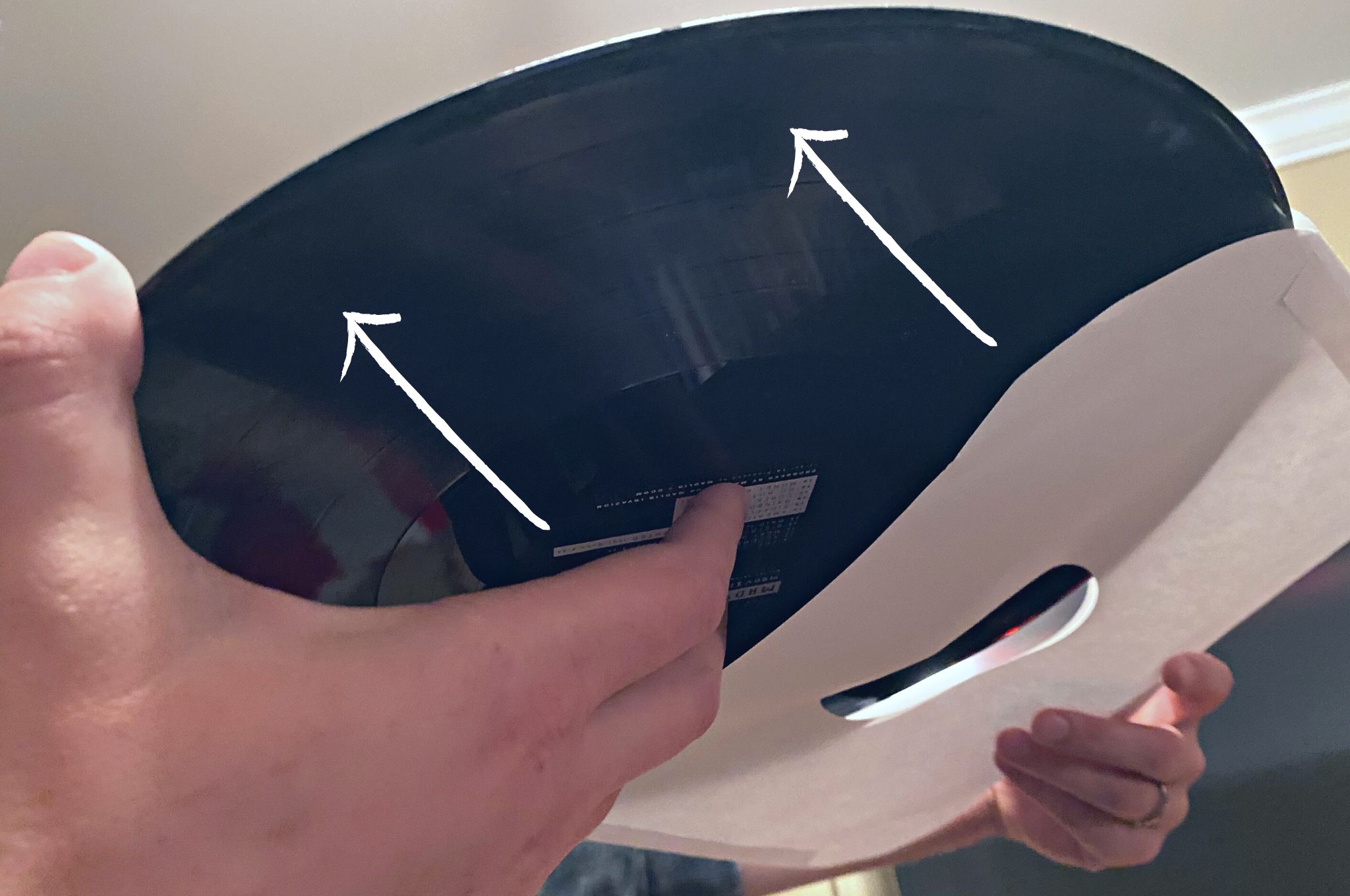
Use your thumb, middle, and ring fingers to remove the entire record from the inner sleeve. Try your best to minimize contact as much as possible. Your thumb should only touch the outer edge, and the other fingers can be placed on the inner label at the center.
Step 4: Handling a vinyl record outside the sleeve
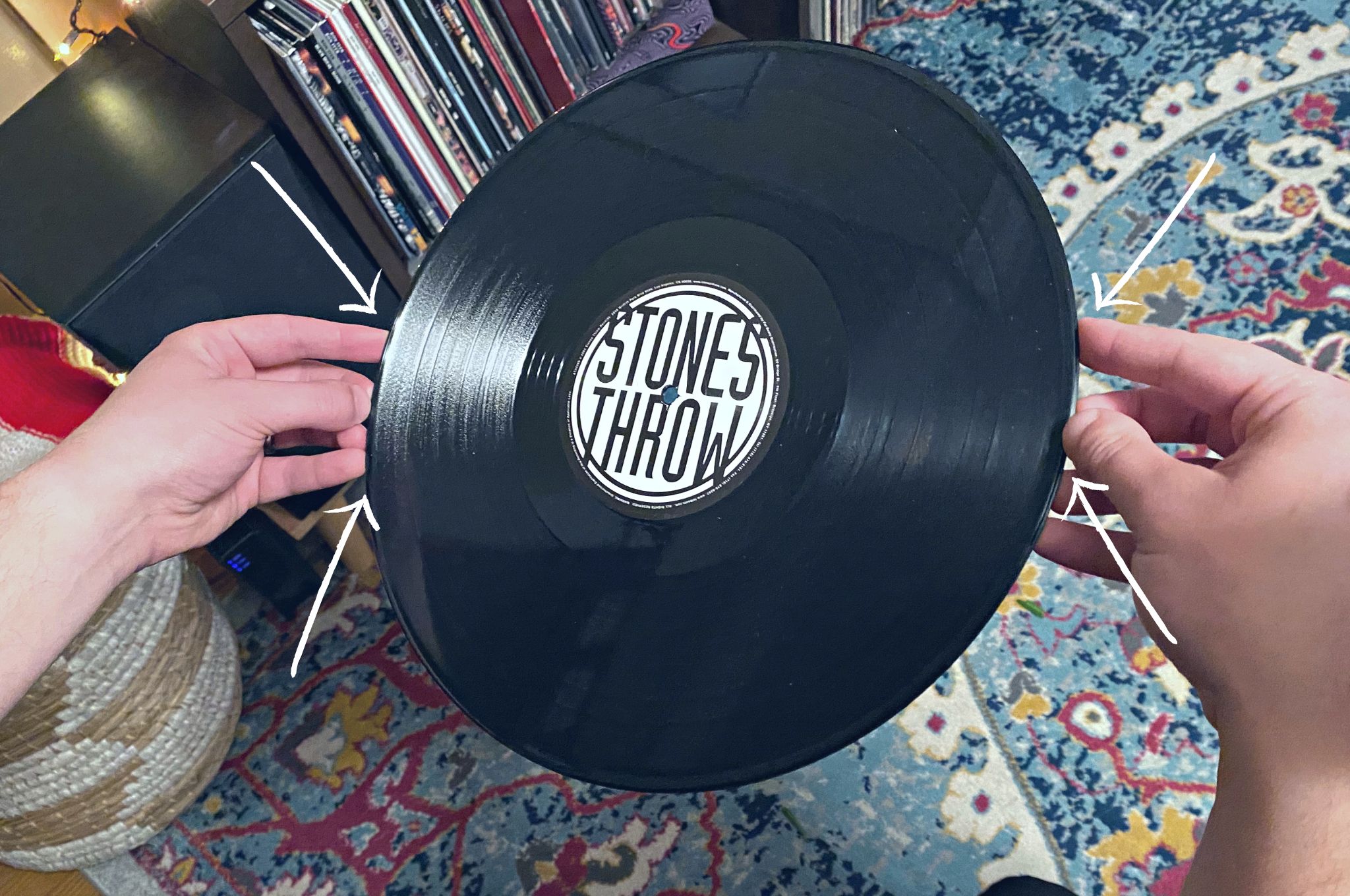
Once you have removed the record from its inner sleeve, this is where attention to detail is the most important. It can be easy to accidentally place a finger on the wrong part of the record, and this is why many audiophiles wear gloves when handling vinyl records, but that isn’t a requirement.
When you handle vinyl records outside the inner sleeves, you want to ensure you only touch the center record label and the very edge of the record. You must avoid the playing surface and grooves of the record every step of the way.
This will be the case with any record in your vinyl collection, and these steps should be followed regardless of the vinyl record’s age. The data in the grooves of a vinyl record can easily be damaged or compromised in several ways, and nobody likes inconsistent playback with unnecessary pops and skips. You can go one step further with your safety measures by storing your vinyl records in polyurethane sleeves with natural anti-static properties.
Step 5: Place the record on the turntable platter
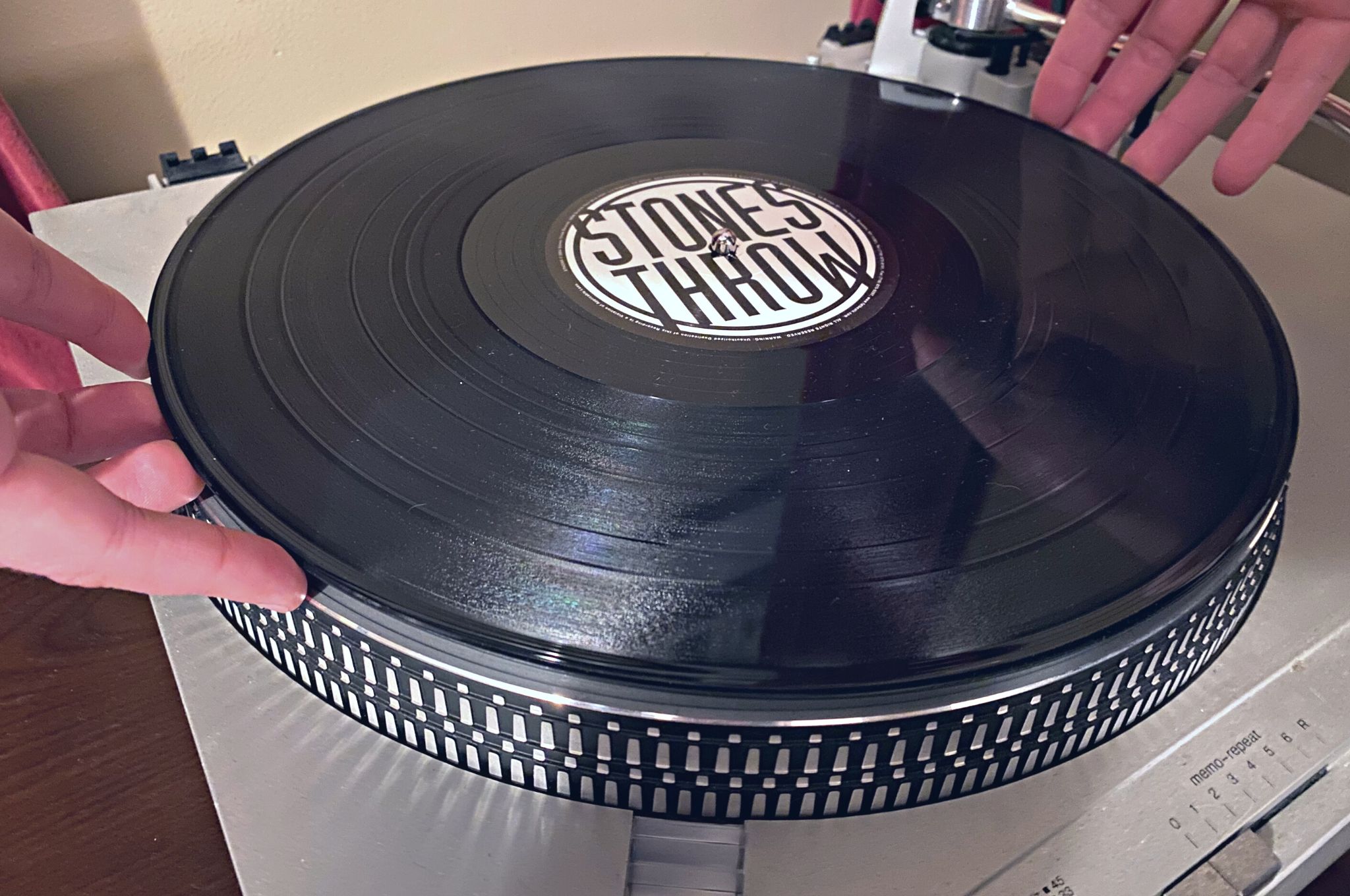
Slowly and carefully transfer the record to both hands, being careful to only touch the outer edges. Gently align the record’s hole with the spindle (the center post on the platter) and ensure it makes full contact with the platter mat.
Step 6: Storing your vinyl records
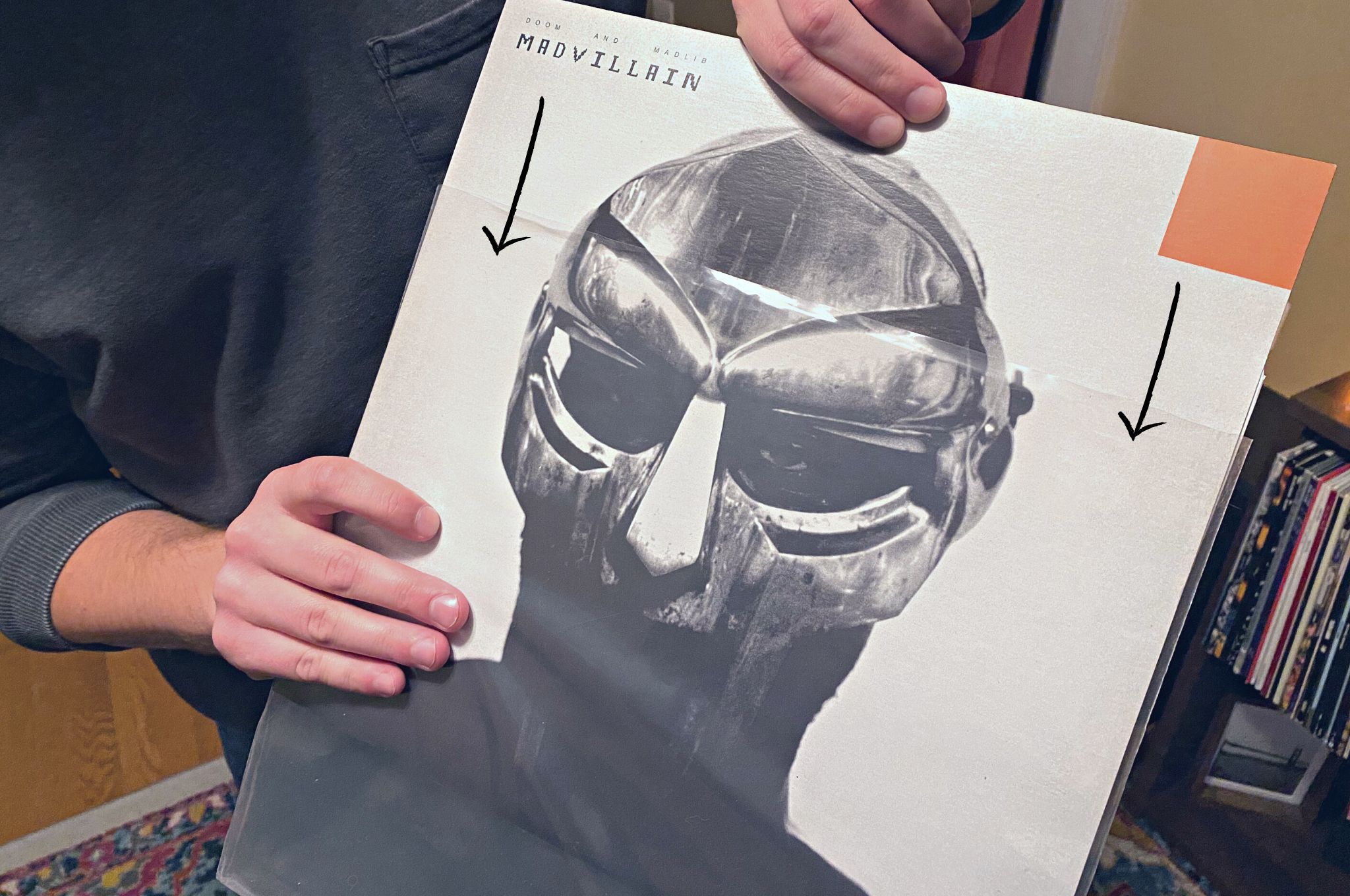
Once you’re done with a listening session, it’s important not to leave your records out in the open. It doesn’t take long for them to collect dust from the environment around them. Before putting them back into the inner sleeve, it never hurts to give them a quick wipe-down with a microfiber cloth or anti-static brush. It’s always easier to do this when the record is still placed on the turntable’s spindle.
Once you’re ready to return it to its inner sleeve and jacket, you can start by picking up the vinyl record by its outer edges. It’s usually easiest to do this with your ring and middle finger. After you’ve lifted the vinyl record from the spindle, you can get a better grip on the record by its record label and using your thumb for the edges.
You can now return the vinyl record to its inner sleeve, and at this point, handling the record becomes a lot easier. Now you can grab the outer part of the sleeve any way you like and place the sleeve back into its jacket. From here, the only step left is to put the jacket inside the outer protective sleeve, which is usually made of standard plastic.
Why are these steps important?
It might not seem like it, but poorly handling records will guarantee a low sound quality down the road. Simple things like dust, debris, fingerprints, and physical damage can cause irreversible outcomes for the quality of your records. The best way to avoid these issues is by following the above steps every time you handle a record from your collection.
Some of the dos and don’ts include:
- Don’t stack your records on top of each other
- Only wipe them with a brush or cloth made for cleaning records
- Don’t leave them sitting on the turntable unless they’re being used
- Always handle with equal care, regardless of their current quality
Records are sensitive items requiring the same, consistent care every time they’re handled. Sure, you could try to repair the damage done to your records, but this can become costly depending on the number of vinyl records you have and how much damage is done. Still, if you’re diligent about this, they’ll deliver a satisfactory experience for many years. It’s always easier to take proper care of them from the start.
If you’re worried about touching the grooves and playing surface of a vinyl record, wearing gloves is an easy way to avoid this. You should also clean a vinyl record consistently, which can be done efficiently with the help of a microfiber cloth. Above all, always keep the outer or inner sleeves, as vinyl records shouldn’t have direct contact with the jacket itself.
It’s also important to remember that the turntable’s needle is extremely sensitive, and the tiniest speck of debris can adversely affect its tracking abilities. In many circumstances, minor debris can easily be cleaned, but this is only the case if you carefully handle your vinyl records and clean them consistently.
How proper storage helps retain their quality
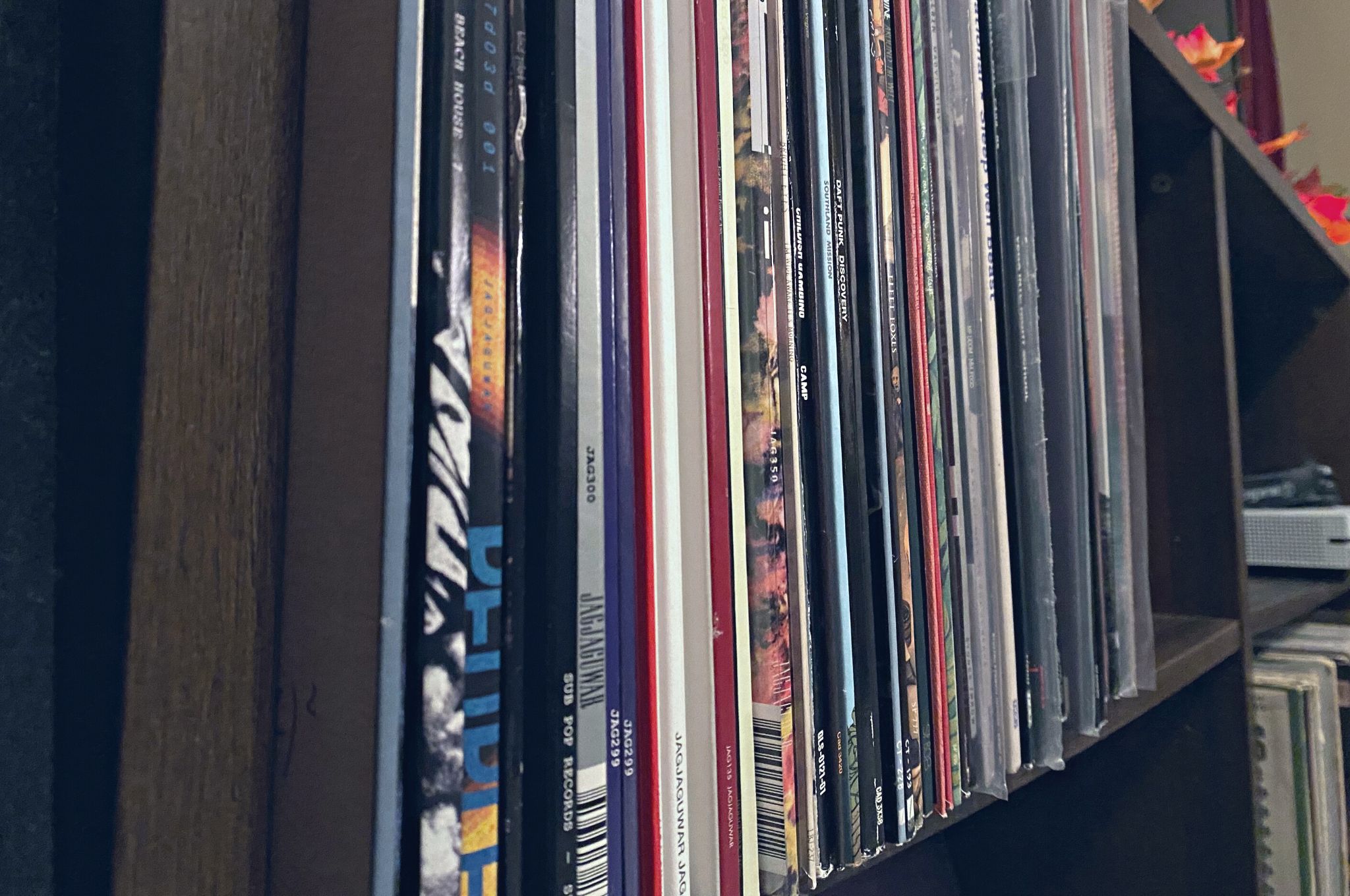
Aside from the damage that can be done by handling vinyl records, the way they’re stored is equally important. An excellent rule of thumb is to never have too much weight pressing on a vinyl record. This is relevant whether they’re standing up or lying down. Stacking too many records on top of each other isn’t suitable for the integrity of the record. It also acts as a magnet for the dust to collect.
Regardless of dust and debris, improper storage can cause physical damage to records, especially if they don’t move for long periods. Any enthusiast would tell you to keep your records upright, but you don’t want them leaning heavily in one direction. If too many records are leaning into each other, you’re essentially dealing with a similar issue as if they were stacked on top of each other.
You don’t necessarily need a case built specifically for vinyl records, but they should have their own space on a shelf without coming in contact with any other items. They must be protected inside and out to ensure your vinyl quality never wavers.
On another note, you never want to leave a record outside of its protective covering unless it’s being used. When you’re done using a record, don’t leave it resting on the spindle for hours on end, and you never want to leave it lying around, either. Any time you’re done listening to a vinyl record, follow the steps above and place it back into its inner sleeve and jacket.
Conclusion
If you follow the information in this article, you’re guaranteed to retain the quality of your vinyl records for many more years to come. A mistake here or there isn’t the end of a vinyl record, but it only takes a little to affect the audio quality they deliver.
As long as the records have the necessary protection and are appropriately handled with each use, their quality should always stay strong. Overall the most crucial information from this article pertains to how you handle vinyl records and store them when they’re not in use.

Lead Editor / Owner
After beginning his career in the video and audio recording industry, Andrew started HiFi Hippo to share his knowledge and passion for vinyl and vintage audio with other readers.
